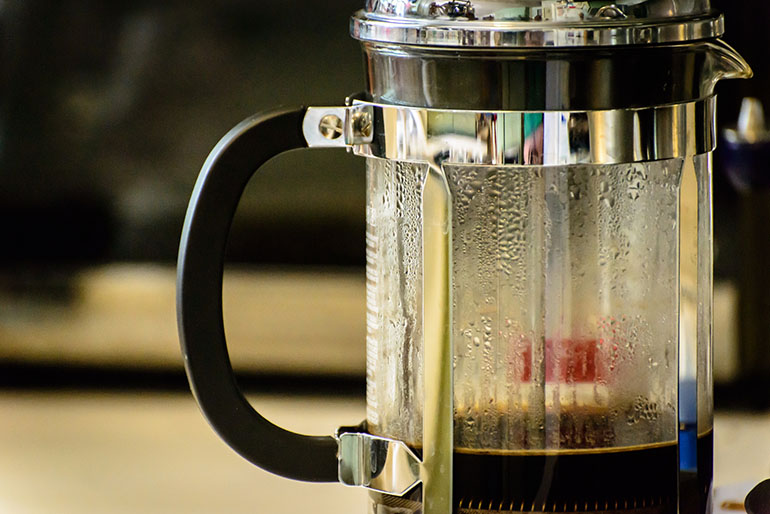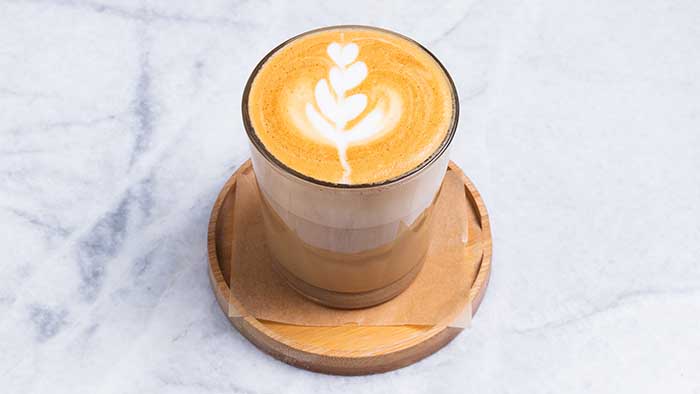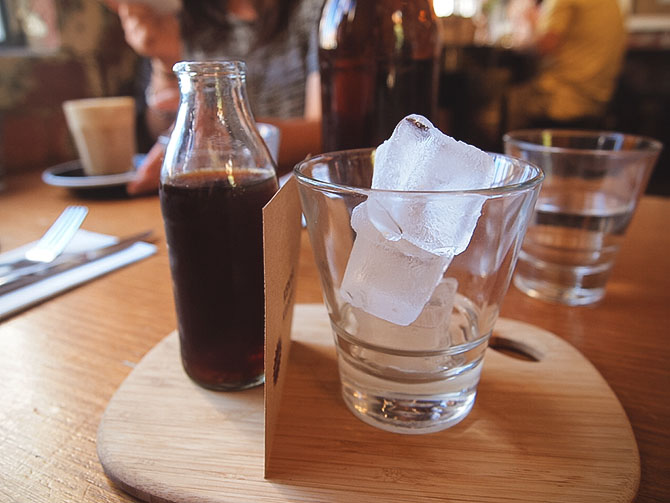We all have a favourite coffee shop, where they seem to make our drink just right. But when you want to make your own it can be hard to replicate that beautiful coffee taste at home.
Having all the right brewing gear is only the first step to the perfect homemade coffee, and there are a lot of things that can go wrong.
Here are 15 of the most common coffee brewing mistakes, and how to fix them.
#1. You are buying low-quality coffee
We might as well start off with the most obvious: Don’t buy cheap coffee.
Poor quality coffee can be oily, stale, and bitter. And while it still might offer a caffeine boost, it can be such an unpalatable mess that it’s a waste of money.
I know it might seem tempting when there are cheaper varieties easily available at your local supermarket, but you really do get what you pay for.
Some might think that ‘coffee is coffee’, but there are so many variables that go into a roast or brew that a low budget version is always going to pale in comparison to that of higher quality.
For more ideas on what to look out, check out my guide to buying coffee.
#2. You are using old coffee
I think it can be difficult to regard coffee as a perishable item, particularly if you are used to preparing tea or instant coffee (I won’t judge). However, your coffee’s roast day is much more important than you might think.
Coffee goes stale very quickly. Its aging process starts pretty much as soon as the coffee has gone through roasting, and this process speeds up even further once you grind it. Make sure the beans you pick are reasonably fresh and as close to its roast date as possible. I would recommend not going for anything older than a week.
For this reason, I also strongly recommend not buying coffee in large batches. It’ll take you too long to get through it before it goes stale. Instead, I suggest buying fresh beans weekly or at least biweekly. This will ensure that your cup is fresh when you come to brewing.
#3. You are buying pre-ground coffee
If you’re buying online or off the shelf I definitely recommend whole beans rather than ground.
Pre-ground coffee is essentially a big no-no, and for a really good reason: As soon as coffee is ground it starts aging and going stale, and a lot faster than it does in bean form. In fact, after as little as 15 minutes ground coffee begins to lose its flavour. When ground coffee is stale it tends to be dull and dead.
Instead, invest in a grinder and buy your own beans. Grinders aren’t that expensive and allow you a lot of freedom to experiment with different brewing methods.
Always try to grind beans as and when you need them. If you don’t have your own grinder than I recommend you get one as soon as possible. They’re fairly inexpensive, and you can even get a good burr grinder for around thirty dollars. It’s worth the investment.
#4. You aren’t storing your coffee properly
One of the biggest crimes with home brewers is that they don’t store their coffee safely away at home.
A lot of people will have a bag of coffee beans, open them, fold over the bag’s opening, and then store them in a cupboard.
This is wrong, wrong, and wrong.
Why? Well there are two reasons: One is that simply folding over the bag’s opening can still leave the beans exposed to oxygen and bacteria. The other reason is that some cupboards can be prone to being hotbeds for moisture in the air, particularly if you boil your kettle immediately below it.
Exposure is one of the fastest ways to ruin a coffee bean.
To avoid this, store your beans in a vacuum container or in a sealed coffee bag in a cool dry place.
Oh, and never, ever put them in the fridge. Coffee beans are vulnerable to absorbing the aromas around them, so keeping them in the fridge with other foods will result in a funky-smelling cocktail of whatever’s in your fridge.
#5. You are not using the right equipment
Many home brewers are available on the market at a range of different prices, and are appropriate for a variety of skill levels too. However, the quality of the equipment doesn’t really matter if you’re using the completely wrong brewing method for your chosen coffee bean.
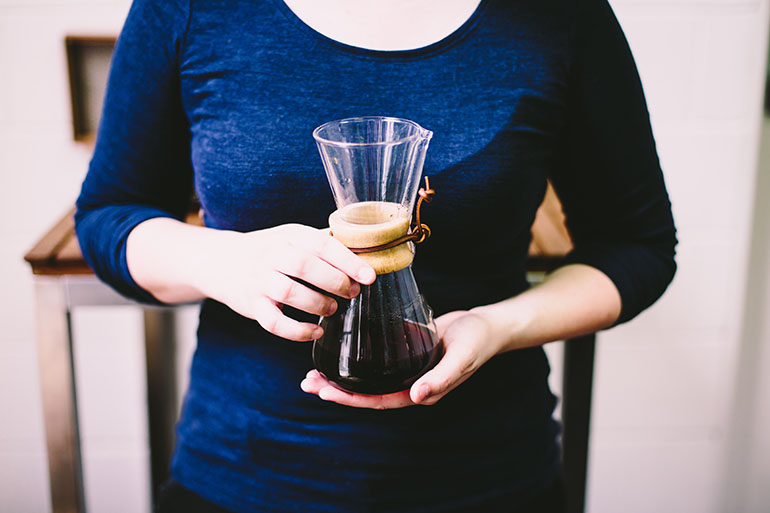
For example, you could well have a beautiful Chemex brewer, paired with an excellent grinder, but if you’re trying to match that with a dark roast then the whole thing will just fall in on itself. You’ll just wind up with smoky and burned notes, which goes against the light and medium-body flavors that a Chemex is designed to bring out.
Consider what kind of cup you want and then go from there. For example, if you want a clean cup, with good profile characteristics, use filter brewing methods.
For a more dense and intense cup of coffee use a French press.
Don’t be afraid to do some homework: Research your brewing methods and what it has to offer compared to other types.
Even with the same beans, different brewing methods can achieve completely different results in levels of quality, taste, and aroma.
#6. You are not preheating your brewer
This is such an easy step, and takes only a few seconds to do.
Whatever brewing device you’re using, make sure to give its vessel or jug a rinse with heated water prior to use. Temperature plays a key role in coffee brewing, and the difference between a warm and a cold cup can’t be overstated.
Preheating your brewer will ensure that your brewing temperature stays consistent throughout the process, which will give you an even extraction.
In short, it will give you a better tasting cup of coffee.
It sounds like an insignificant step but, believe me, it has a tremendous impact on brewing quality.
#7. You are not cleaning your equipment properly
I can verge on obsessive with my desire to keep all my coffee equipment clean, but I do genuinely believe that this is important for even the laziest of home brewing fans
Keep everything clean, especially your grinder.

Ground coffee produces oils that will affect the taste of you next cup, so any leftovers that you leave for the next beans you use will remain and have an impact on your next cup.
However, don’t use soap and water on a blade grinder. This this can clog up its parts and maybe even lead to rusting. Instead, you can use uncooked rice to absorb any leftover particles and oils.
For other brewers, use soap and water sensibly. Also run it with vinegar on a monthly basis. This will remove buildup and any leftovers, which can make your coffee taste bitter.
If you notice your coffee’s quality noticeably starting to decline, it could be a time to spend some money and replace your brewing setup altogether.
#8. You are using the wrong grind size
Grind size is easy to mess up with. I’ve actually talked about it before in my post on why grind size matters here.
In short, most filter brew methods are going to need a medium grind size (sort of similar to sand). While flavour is obviously a good indicator of if you got your grinding right or not, another good guide to knowing if your grind is too coarse or fine is to see how long it takes you to brew the coffee through a drip filter. If it only takes a minute or two then your grind is too coarse. Likewise, if it takes over five minutes then it’s too fine.
Similarly, if your coffee tastes too weak then it’s too coarse. If it’s too bitter then it’s too fine.
If you’re using a cheap blade grinder your coffee is just going to taste bad regardless. Your days of using a blade grinder are over. Invest in a burr grinder today.
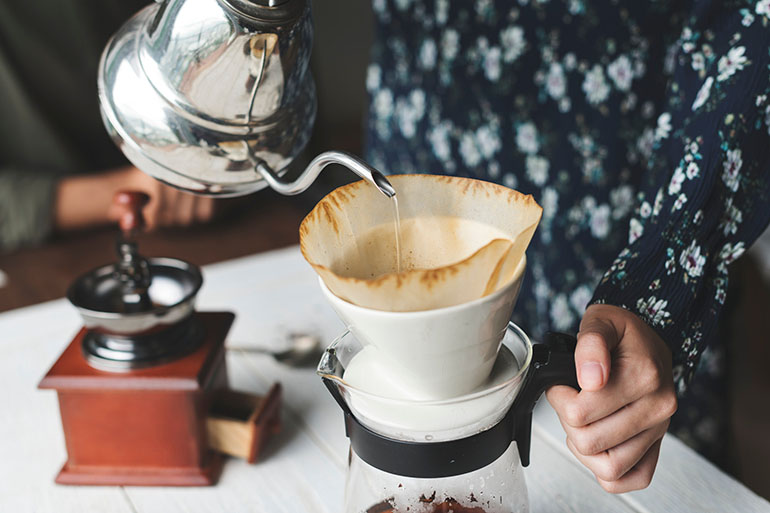
#9. You are not rinsing your filter
Despite their lightweight appearance, paper filters can actually impart a certain amount of flavor on to your coffee, especially if it’s bleach-washed. To counter this, once you’ve placed your filter paper in your V60 or Chemex, give it a quick rinse with hot water. This will remove any paper dust and reduce any woody or chemical taste from the filter.
Also, I hope this goes without saying but… never reuse a paper filter. That’s just gross. Don’t do it.
#10. Your water isn’t hot enough
It’s important to pour newly boiled water into your brewer as it’s water close to this temperature that allows the flavors in your coffee to come out.
Hot water is key to extraction, and it extracts much faster than cold water. Also, cold coffee is just a bit weird, no?
The ideal temperature range for proper brewing is 195°F (91°C) to 205°F (96°C). This is hot enough to extract carefully and quickly, but not so hot to burn or over-extract the coffee. If your coffee is tasting too sour, use hotter water. If it’s too bitter, use cooler water.
#11. You are eyeballing your measurements
When you are making a cake, you are measuring all the ingredients as precisely as possible. The same should go for coffee.
If you’re cooking you would probably use scales, a thermometer, and a timer. The same should be true for coffee. And not just coffee, but also the water you’re using.
Use whatever you have handy: Measuring cups, dinner spoon, ice cream scoop, shoot glass etc. Just find your perfect dosage and stick to it!
If you want to be really thorough, then I recommend getting some purpose-made scales for coffee.
A lot of V60 filter sets come with a measure spoon, which is what I tend to stick by.
As for water measurements, I use scales to weigh the amount of water I’m adding relative to the coffee I’ve used. The general consensus is that the best coffee-to-water ratio is 1:16. I’ve always stuck by that and it’s never let me down.
#12. You are not consistent
One day your coffee is too strong, the next it’s thin and bitter like an over-steeped tea. Once you’ve mastered your chosen recipes, you need to stick to it.
This might seem a bit repetitive, but it guarantees that you will make a great cup of coffee every single time.
If you want to change one of the brewing parameters, make sure you change just one thing at a time. If you change too many things, you lose control of what you’re doing and end up with messy results.
#13. You are using cold cups
Much like preheating your brewing equipment, it’s important to preheat your coffee cup.
This helps keep brewing consistent, but will also help keep your drink warmer for longer. Coffee starts to turn bitter once it starts to cool, so the longer you can keep it warm the better.
Just before you start pouring hot water into your brewer, pour some of water into the cup. Leave it in there while the coffee’s brewing, and empty it before filling with coffee.
#14. You are adding cheap additives
At the risk of sounding like a pretentious purist (but hey, I’m going to do it anyway), additives like sugar, creamer and syrups detract from the overall taste of your coffee.
Aside from when I’m having a latte, I’ve never enjoyed added milk or cream in my coffee. A lot of packaged creams tend to be processed and cheap, and if you’ve made a lot of effort to home brew your drink, why would you ruin it with this?
If you absolutely must add sweetener or cream, try to buy them specifically from coffee shops to ensure you’re getting high quality versions of them.
#15. You are drinking coffee right after brewing
You probably already know how bad cold coffee (attention, not a cold brew) could be, but things can swing the other way: Piping hot coffee is not fun either. Not only because you will burn your mouth, but also you won’t get all the taste from your brew.
Industry standards say that temperatures should be around the 180°F/82°C mark, but people much better informed than me say it should be even lower than this.
If you’re using a high quality coffee in particular, and want to be able to taste some of the nuanced flavour within it, then aim to drink at around 120-140°F/50-65°C. At this temperature, the sweet and bitter flavours that we often associate with coffee really start to come through.
And there’s the fifteen quick fixes you can make to ensure you are getting the absolute most out of your coffee. Have I missed anything? Let me know in the comments below!
